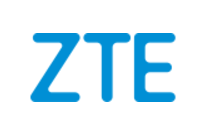ZTE Corporation, an international provider of telecommunications, enterprise and consumer technology solutions for the Mobile Internet, today announced that it has participated in the drafting of “5G Implementation Guidelines: SA Option 2”, the systematic guidance for large-scale 5G standalone deployments. The Guidelines have been released on 30 June by GSMA.
With the drafting organised by GSMA and China Telecom, ZTE has contributed the chapter of transport network, elaborating on the key technical functions and the deployment strategies of 5G SA transport networks.
The Guidelines cover the end-to-end wireless, core network and transport network technologies in 5G SA construction. It also introduces the new challenges in capacity, slicing, reliability, O&M and synchronisation while offering the solution.
The FlexE technology can well address the requirements of low-cost network construction and long-term evolution. Integrated with SR and VPN, FlexE supports both soft and hard slicing to enable flexible bandwidth scaling on demand while offering differentiated services for users of different levels and isolating services in a safe and flexible manner.
In terms of reliability, the SDN-based innovative technologies can offer optimal service paths on demand, and avoid the congestion and the multi-point failure, thus achieving the 50ms carrier-grade protection switching.
With respect to intelligent operation and maintenance, the new technologies such as SDN and AI can visualise the network status and accurately monitor the service quality while enabling the self-optimisation of bandwidth capacity, fast fault location, self-repair and self-learning, so as to intelligently and automatically adjust the O&M rules.
In terms of time synchronisation, the ground synchronisation technology, as a supplement and enhancement to the original GNSS (Global Navigation Satellite System), can decrease the number of synchronisation network hops by down-shifting the time source. Meanwhile, ingress time-stamping is employed on the device to eliminate the error between the system phase-locked loop and time distribution, thereby increasing the time precision of synchronisation network to level B or C.
Comment on this article below or via Twitter: @VanillaPlus OR @jcvplus






